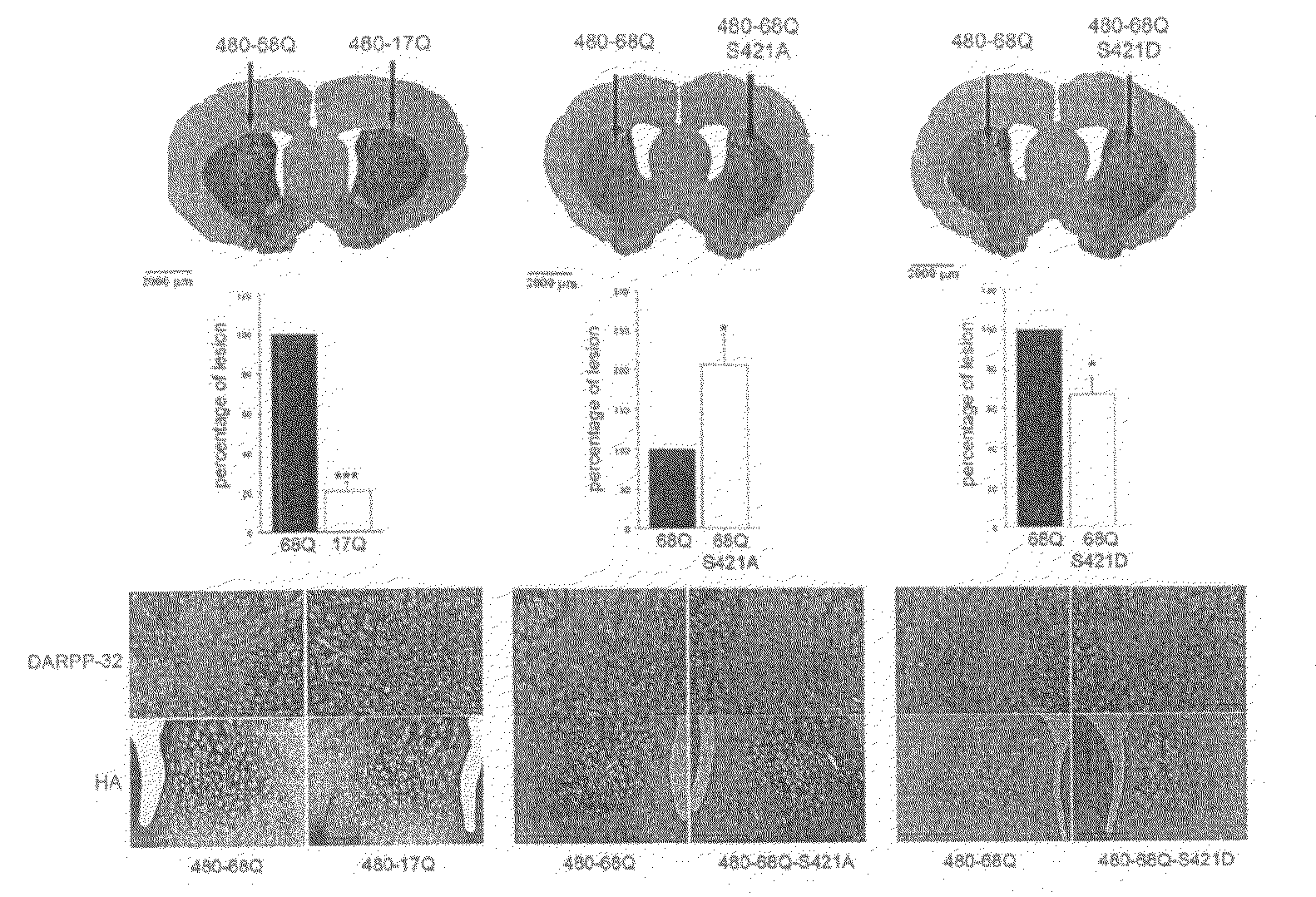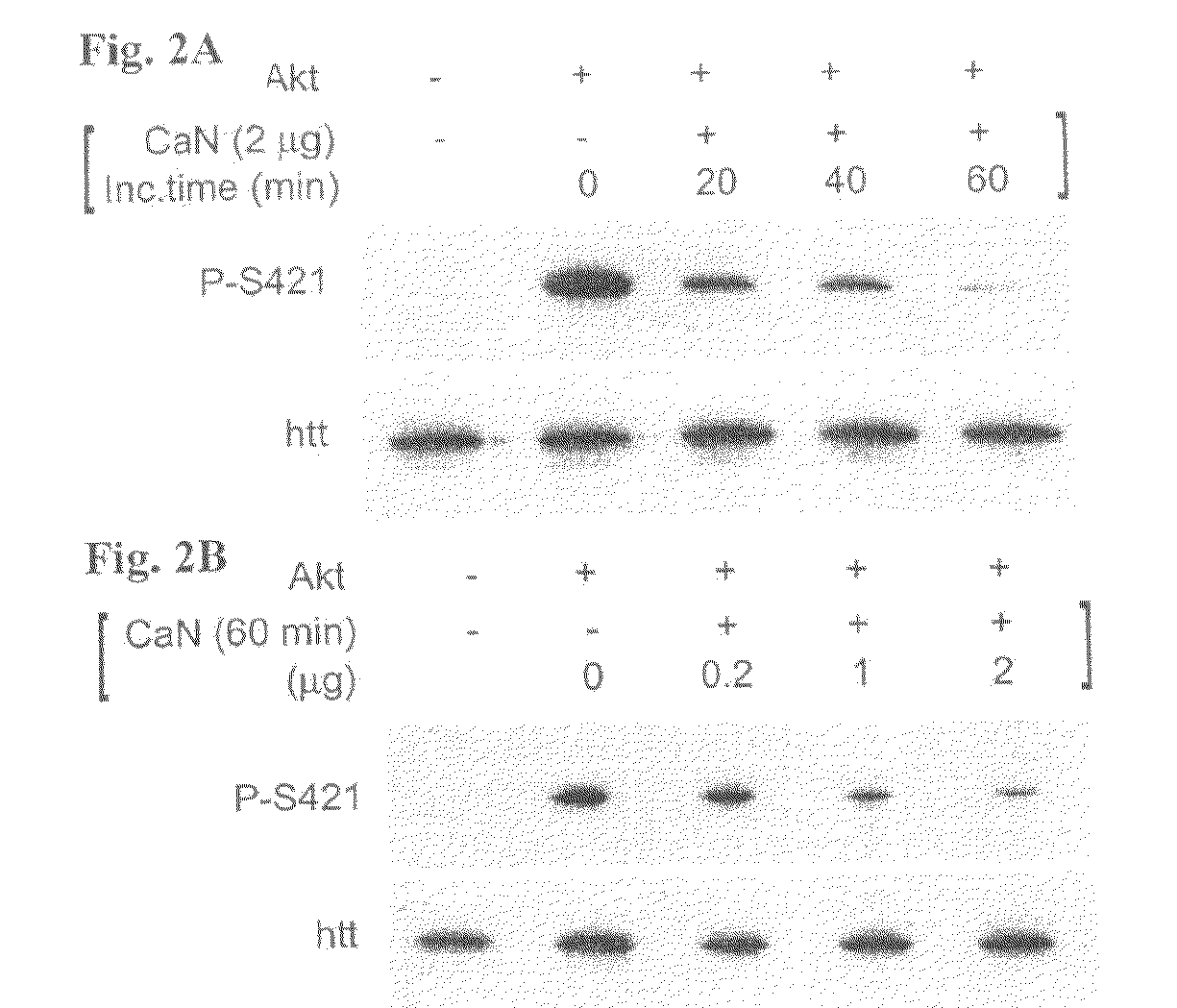Method For Treating Huntington's Disease by Inhibiting Dephosphorylation of Huntingtin at S421
a technology of huntingtin and phosphorylation, which is applied in the field of huntingtons disease, can solve the problems of loss of intellectual faculties, increased concentration on intellectual tasks, and uncontrollable movements, and achieve the effects of preventing the polyq-huntingtin-induced death of neurons, and increasing the phosphorylation of huntingtin
- Summary
- Abstract
- Description
- Claims
- Application Information
AI Technical Summary
Benefits of technology
Problems solved by technology
Method used
Image
Examples
examples
[0061]The following example illustrates the invention.
Materials and Methods
[0062]Constructs. The pSIN-480-17Q, pSIN-480-68Q, pSIN-480-68Q-S421A and pSIN-480-68Q-S421D were generated from the 480-17Q, 480-68Q, 480-68Q-S421A, and 480-68Q-S421D plasmids respectively (Humbert et al., 2002). These plasmids encode the first 480 amino acids fragment of huntingtin with 17 or 68 glutamines and a serine to alanine mutation (S421A) or a serine to aspartic acid mutation (S421D) at position 421. First, a PCR strategy was used to modify the C-terminal part of the 480 constructs (QuickChange site-directed mutagenesis; Stratagene, La Jolla, Calif., USA) using the forward primer: 5′ GCAGCTCACTCTGGTTCAAGAAGAG 3′ (SEQ ID No 1) and the reverse primer:
[0063]5′CTCGAGTTAAGCGTAATCTGGAACATCGTATGGGTAGGATCTAGGC TGCTCAGTG 3′ (SEQ ID No 2) containing a hemmaglutinin-tag (HA). The various fragments were cloned into the parental 480-17Q / 68Q plasmids resulting in the generation of the vectors 480-17Q / 68Q with S421...
PUM
| Property | Measurement | Unit |
|---|---|---|
| Toxicity | aaaaa | aaaaa |
Abstract
Description
Claims
Application Information
 Login to View More
Login to View More - R&D
- Intellectual Property
- Life Sciences
- Materials
- Tech Scout
- Unparalleled Data Quality
- Higher Quality Content
- 60% Fewer Hallucinations
Browse by: Latest US Patents, China's latest patents, Technical Efficacy Thesaurus, Application Domain, Technology Topic, Popular Technical Reports.
© 2025 PatSnap. All rights reserved.Legal|Privacy policy|Modern Slavery Act Transparency Statement|Sitemap|About US| Contact US: help@patsnap.com



